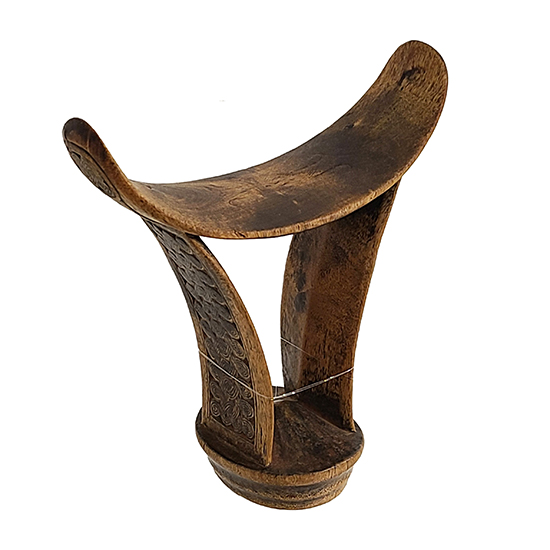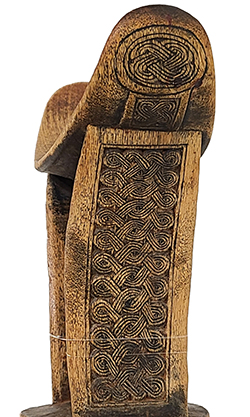Somali Headrest

Headrests are used by many people around the world during sleep. This type of headrest, known as a barkin, is used by nomadic Somali and Aweer (Boni) people in southern Somalia and eastern Kenya.
In Somali culture, headrests are used by both men and women. By elevating the head during sleep, headrests protect the user from getting attacked by scorpions, snakes, and other dangerous pests. Men’s headrests, like this one, have a smaller base which makes them somewhat unstable to sleep on. This intentional instability prevents the shepherds that use them from falling into a deep sleep while guarding their animals. Thus, the headrest has become a symbol of vigilance. Women’s headrests have a more stable base.

Headrests like this one are carved from a single piece of lightweight wood known as hagar or yucab wood. The incised decorations on the supports of the headrest show an interlaced rope motif, likely reflecting Islamic influence. Some experts interpret the design as a type of prayer for God’s protection of the sleeper.
For Somali men, headrests are an indicator of status. This type of headrest, with two supporting columns, is reserved for elders, while a different style with a single column is used by young men. More elaborate decorations also indicate higher status.
Headrests also feature in the wedding rituals of Somali nomads. On the wedding night, the groom places a sum of money, known as the tubash, under the bride’s headrest. The next morning, she will use the money to purchase an amber necklace, a symbol that she is now a married woman.
This piece, along with more than two dozen other headrests, is currently on display in Headrests: The Exhibit. Research assistance for this post was provided by the exhibit curator, Rebekah Lassiter (’23).
